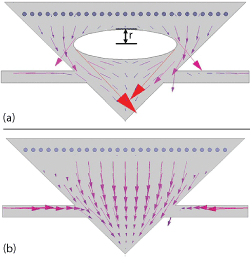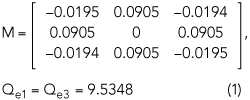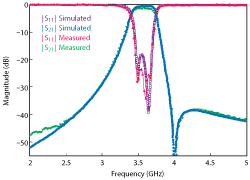
Figure 1 Electric field distribution of a square SIW resonator (a) and QSIWR (b).
A novel quarter substrate integrated waveguide resonator (QSIWR) with an etched elliptic defected structure (EDS) to reduce its resonant frequency employs electric coupling in the main path and magnetic coupling in the cross-coupled path to realize a miniature cross-coupled bandpass filter (BPF) with a size reduction greater than 88 percent. The filter possesses a transmission zero (TZ) in the upper stopband, which improves selectivity.
Various kinds of substrate integrated waveguide (SIW) filters have been reported in the recent decade,1-4 with the advantages of high Q, light weight and ease of fabrication/integration. Compared with other planar filters, however, SIW filters are generally larger in size.1 Although advanced multilayered technologies can reduce their dimensions, the fabrication process is costly and complicated. To realize miniaturized filters in a single layer, the concepts of half-mode,2 quarter-mode,3 and even eighth-mode4 SIW resonators (SIWR) can greatly reduce the size of SIWRs. Based on EM simulation, many kinds of miniaturized SIW filters using these resonators have been reported, but the coupling mechanisms, especially the cross-coupling theory, are still being explored.
In order to further reduce the size of SIWRs,4 a new QSIWR with EDS is described here. Compared with conventional SIWRs, the resonant frequency drops dramatically. A cascaded triplet QSIWR with EDS filter is designed using cross-coupling technology. Compared with a cascaded triplet SIWR filter, the size is reduced by more than 88 percent. A TZ is implemented with cross-coupling technology in the upper stopband to improve selectivity. Experimental results agree well with simulation.
FREQUENCY CHARACTERISTICS OF QSIWRS WITH EDS
Figure 1a shows the electric fields of a square TE101 mode SIWR. Cutting along AA’ and BB’, leaves a QSIWR as shown in Figure 1b.3 Because the open sides of the QSIWR are nearly equivalent to perfect magnetic walls, there is little wave leakage along the two walls. So, the QSIWR can be used to design various cavity filters with 75 percent size reduction.

Figure 2 QSIWR surface current distribution, with (a) and without (b) EDS.
The QSIWR with EDS is shown in Figure 2. The elliptic defected structure is etched in upper metallic layer. The elliptic major axis is parallel to the hypotenuse of the isosceles right triangle, with the axial ratio fixed at 3.3. The length of minor axis is r. Figures 2a and b indicate the surface current distributions of the QSIWR with and without EDS, respectively. As the surface current is disturbed by the EDS, the equivalent electric length of the QSIWR with EDS is extended. The resonant frequency of the etched QSIWR is determined by both the sizes of the resonator and EDS. Figure 3 shows the influence of r on resonant frequency, while the size of the QSIWR remains unchanged. With increased r, the resonant frequency decreases, i.e., for the same resonant frequency, the QSIWR with EDS is smaller.
CROSS-COUPLED BPF DESIGN
The BPF utilizing cross-coupling technology is shown in Figure 4a, while Figure 4b depicts its coupling topology. The main coupling path is realized with a cascaded triplet QSIWR, which is indicated in solid lines. A TZ is implemented with cross-coupling between Resonator 1 and Resonator 3, indicated by a dotted line. The I/O feed lines are directly coupled with the cascaded triplet QSIWR, which determines the coupling with external circuits. The filter is specified to work at 3.6 GHz with a fractional bandwidth of 8.5 percent. The TZ is tuned to 3.98 GHz. The coupling matrix and the external quality factor are calculated as follows:5

where Mij denotes the coupling coefficient between resonator i and resonator j, while Qe1 and Qe3 represent the input and output external quality factors, respectively.

Figure 3 |S11| vs. r.

Figure 4 Cross-coupled cascaded triplet bandpass filter (a) and coupling topology (b).
According to odd-even mode theory5 and EM simulator analysis, the direct-coupling structure is electric in nature, while the cross-coupling structure is magnetic. The cross-coupling strength has a distinct relationship with the TZ. As shown in Figure 5, the coupling strength is determined by parameter j. As j is increased, the coupling strength also increases, pulling the TZ closer to the passband, and thus improving selectivity in the upper stopband.

Figure 5 |S21| vs. j.
RESULTS AND DISCUSSION
The filter is fabricated on Rogers RT/duroid® 5880 substrate with dielectric permittivity εr = 2.2 and thickness h = 0.508 mm (see Figure 6). The optimized dimensions are w = 1.6 mm, l1 = 9.3mm, l2 = 10 mm, r1 = 2 mm, r2 = 1.92 mm, j = 4 mm, b = 30mm, d = 0.5mm, p = 1mm and g = 0.62 mm. The total size of the filter is about 20 mm x 53 mm including the 50 Ω microstrip feed lines. Assuming that a conventional SIWR is used in the design of a cascaded triplet filter, its total dimensions would be no less than 95 mm x 95 mm; therefore, the cross coupled filter is a more compact structure, with greater than 88 percent size reduction.
Figure 7 shows good agreement of measured results with simulation. The measurements are obtained with a Rohde & Schwarz ZVA40 vector network analyzer. Insertion loss is approximately 1.2 dB and return loss is better than 23 dB in the passband. A TZ with attenuation of 57.8 dB is implemented at 4.02 GHz, which greatly improves selectivity in the upper stopband.
CONCLUSION
A novel QSIWR with etched EDS lowers its resonant frequency. A cascaded triplet QSIWR BPF built utilizing cross-coupling technology and a TZ in the upper stopband has a compact structure with greater than 88 percent size reduction compared to a conventional triplet SIWR filter.

Figure 6 Filter fabricated on Rogers RT/duroid 5880 substrate.

Figure 7 Measured vs. simulated filter responses.
ACKNOWLEDGMENT
This work is supported by the fundamental research funds for the central universities (2014QNA85).
References
- X. P. Chen and K. Wu, “Substrate Integrated Waveguide Filters: Basic Design Rules and Fundamental Structure Features,” IEEE Microwave Magazine, July 2014, Vol. 15, No. 5, pp. 108–116.
- Y. Wang, W. Hong, Y. D. Dong, B. Liu, H. J. Tang, J.X. Chen, X. X. Yin and K. Wu, “Half Mode Substrate Integrated Waveguide (HMSIW) Bandpass Filter,” Microwave and Wireless Components Letters, April 2007, Vol. 17, No. 4, pp. 256–267.
- C. Jin and Z. X. Shen, “Compact Triple-Mode Filter Based on Quarter-Mode Substrate Integrated Waveguide,” IEEE Transactions on Microwave Theory and Techniques, January 2014, Vol. 62, No. 1, pp. 37–45.
- S. Sam and S. Lim, “Electrically Small Complementary Split-Ring Resonator Antenna on Eighth-Mode Substrate Integrated Waveguide,” Electronic Letters, April 2013, Vol. 49, No. 8, pp. 519–521.
- J. S. Hong, “Microstrip Filters for RF/Microwave Applications,” Wiley, New York, 2011.
